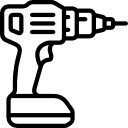- اتو لوله سبز
- اره پروفیل بر
- اره عمودبر (اره چکشی)
- اره فارسی بر
- اره گرد (اره دیسکی)
- اره مویی
- اره میزی
- اره نواری (گوشت بری)
- اره همه کاره (افقی بر)
- ابزار چندکاره
- بالابر برقی
- بتن ساب و موزایک ساب
- بکس برقی
- پیچگوشتی برقی
- پیستوله برقی
- بیسکویت زن
- چکش تخریب
- دمنده/مکنده (بلوور)
- دریل بتن کن
- دریل ساده (سرکج)
- دریل ستونی
- دریل ضربه ای/چکشی
- دریل مغناطیسی (مگنتی)
- دریل نمونه بردار (کرگیر)
- دستگاه جوش
- رنده و فرز نجاری
- سنباده برقی
- سشوار صنعتی
- سنگ دوطرفه (چرخ سنباده)
- سنگ و پولیش
- شیارزن و مرمربر
- فرز مینیاتوری
- فرز انگشتی
- میخکوب و منگنه کوب
- مینی سنگ
How Proper Pipe Installation Reduces the Risk of Future Water Leaks in Your Home
In the realm of plumbing, ensuring that pipes are installed correctly is a fundamental factor in preventing leaks. Many times, minor oversights during installation can lead to significant problems down the line. This article explores how proper pipe support and maintaining a pressure balance can substantially enhance leak prevention efforts.
Proper pipe support plays a critical role in maintaining the integrity of plumbing systems. Without adequate support, pipes may shift or sag, creating stress on joints and connectors. This stress increases the likelihood of leaks forming over time. Understanding the dynamics of pipe placement and securing them appropriately can be a simple yet effective strategy in prolonging the life of a plumbing system.
Equally important is the concept of pressure balance. Pipes must be able to handle the pressure within the system without becoming overburdened. Imbalances can result in excessive strain, leading to potential failures and leaks. By ensuring that the installation adheres to specified pressure limits, homeowners and professionals alike can prevent issues before they arise and maintain a leak-free environment.
Understanding Common Installation Mistakes That Lead to Leaks
The integrity of a plumbing system heavily relies on the methods used during installation. Several common mistakes can compromise the effectiveness of pipe systems and lead to leaks.
One frequent error occurs when insufficient pipe support is provided. Proper support is necessary to maintain alignment and prevent undue stress on joints, which may result in cracks or disconnections over time. Inadequate support can also exacerbate movement from thermal expansion or contraction, creating weak points prone to leakage.
Another mistake involves the improper selection of certified materials. Using substandard or incompatible materials can lead to failure under normal usage conditions. Components must meet specific standards to ensure longevity and resistance to environmental factors.
Additionally, neglecting thorough joint preparation can cause misalignments or weak seals. Clean, deburred, and aligned pipes at fittings are essential. Failing to achieve this increases the likelihood of leaks forming around connection points.
Finally, incorrect torque on fittings during assembly may also bring about issues. Over-tightening can stress materials, while under-tightening allows joints to loosen, both scenarios leading to leaks. Proper torque specifications should always be adhered to for reliable connections.
Acknowledging these installation errors can significantly enhance the resilience of plumbing systems and help prevent future leaks.
The Role of Quality Materials in Preventing Future Pipe Issues
The choice of materials directly influences the longevity and reliability of plumbing systems. Using certified materials ensures that pipes can withstand pressure, temperature fluctuations, and environmental factors that contribute to wear over time. Unlike generic options, certified materials adhere to industry standards, providing greater assurance of performance.
When selecting materials, it is crucial to consider their suitability for specific applications. For instance, pipes must accommodate the correct slope to facilitate proper drainage. This slope is essential to prevent standing water that can cause corrosion and leaks. Quality materials are designed to maintain their integrity under various conditions, supporting the necessary slope without compromising structural strength.
Achieving a tight seal at joints is another critical factor in preventing leaks. High-quality materials often come with improved sealing mechanisms that reduce the risk of gap formation. This minimizes the potential for leaks, especially in systems exposed to vibration and movement.
Compliance with building codes is fundamental. Using approved materials not only ensures safety but also aligns with regulations that dictate the proper installation procedures. Adhering to code compliance helps to eliminate future complications that may arise from using substandard materials.
Installation Techniques That Ensure Long-Lasting Pipe Integrity
Achieving pipe integrity throughout its lifespan requires adherence to specific installation techniques that promote durability and prevent leaks.
- Correct Slope: Ensuring pipes are installed with the proper slope allows for optimal water flow, reducing the risk of stagnant water that can lead to corrosion and leaks.
- Pipe Support: Adequate support prevents undue strain on joints and connections. Utilizing hangers and brackets minimizes movement and potential failure points.
- Tight Seal: Employing high-quality sealing methods, such as thread sealants or appropriate gaskets, guarantees that connections remain watertight, minimizing leak risks.
- Pressure Balance: Installing pipes to handle expected pressure levels is critical. Following manufacturer guidelines helps maintain stability and integrity under varying conditions.
- Code Compliance: Adhering to local codes ensures that installation practices meet regulatory standards, which often incorporate best practices for leak prevention and long-term reliability.
- Connection Strength: Using certified materials and proper joining techniques enhances the strength of connections, providing resistance to wear and potential leaks.
For further information on best practices and professional installation services, visit https://kesterheatingandcoolingca.com/.
Regular Maintenance Practices to Complement Proper Installation
Regular maintenance is a key aspect of futureproofing your plumbing system. By routinely inspecting and servicing pipes, homeowners can identify potential issues before they escalate into major leaks. Scheduling periodic checks allows for the assessment of connection strength and the integrity of seals, ensuring that any signs of wear or damage are addressed.
One critical maintenance practice is monitoring the pressure balance within the system. Fluctuations can indicate underlying problems, such as blockages or leaks. Keeping pressure within optimal ranges can prevent stress on joints and fittings, contributing to long-term reliability.
Ensuring that all pipes are properly supported is another important maintenance task. A lack of adequate pipe support can lead to sagging, which disrupts the correct slope necessary for proper drainage. This can result in water pooling, increasing the risk of leaks over time.
Homeowners should also be diligent about checking for signs of moisture or corrosion, especially in areas where pipes are exposed. Addressing minor concerns quickly can prevent them from developing into significant issues that compromise the entire system.
Lastly, regular examinations can help verify code compliance, which often includes guidelines on the types of certified materials that should be used. Adhering to these standards ensures that the plumbing system remains robust against future issues, maintaining its effectiveness for years to come.




